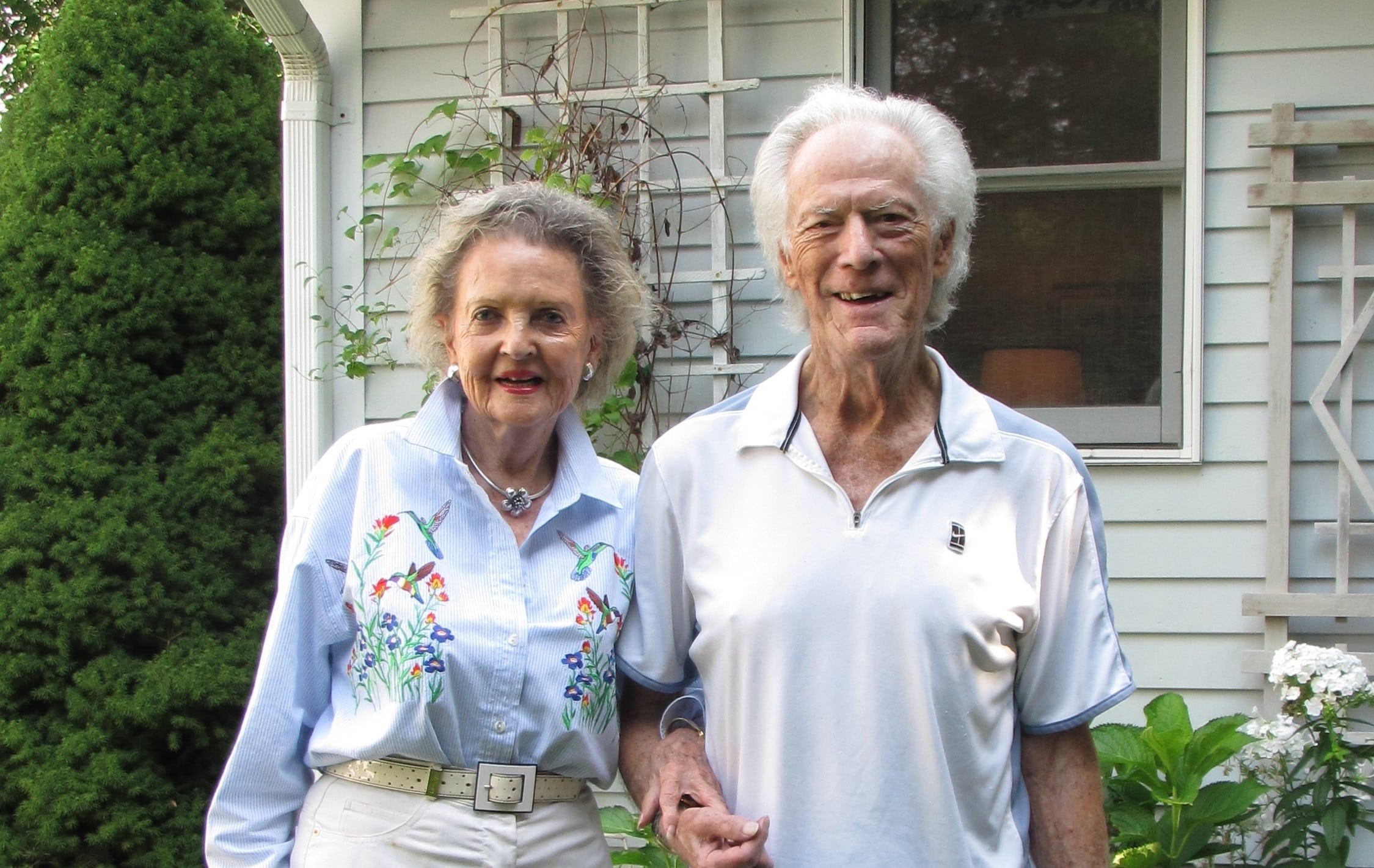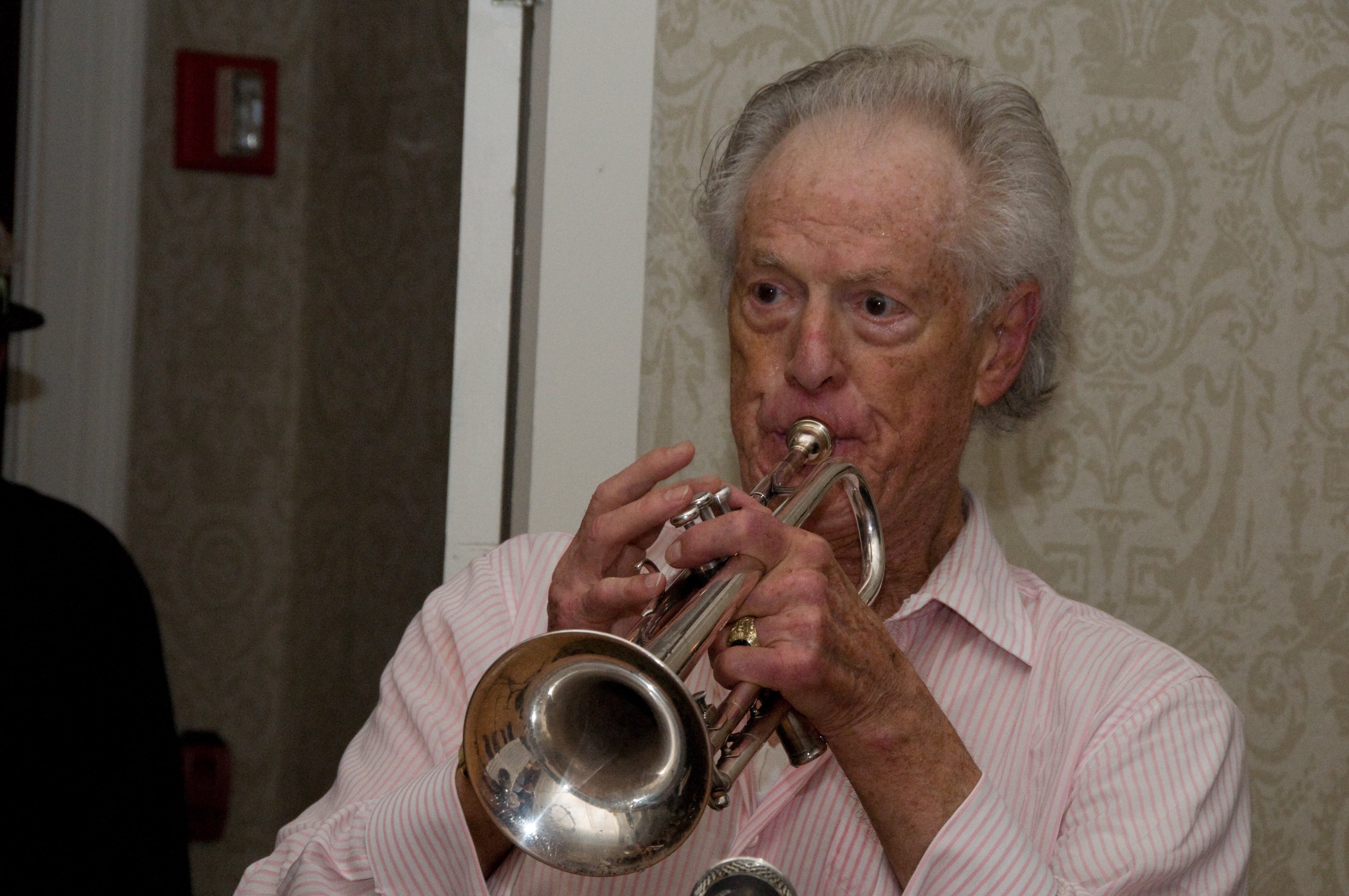Robert E. Woods, the only man to take the field as a starter in the Army-Navy football game as both a cadet and a midshipman, died last month at his home in Darien, Connecticut. He was 96.
Woods played halfback for the Naval Academy's freshman team in 1940, then moved to the varsity in 1941. Struggling academically, he was "asked to leave" Annapolis in the spring of 1942, his son Bob Woods told Military Times. He would resurface at West Point with an assist from legendary football coach Earl "Red" Blaik, playing halfback on the 1942 and 1943 teams.
He would be chosen first captain of the Class of 1945, be featured on the cover of Time magazine as part of a piece on the "Long Grey Line," and marry Geraldine "Gerry" Harrington at West Point the day after graduation. He's survived by Gerry, his wife of 72 years, along with three sons, seven grandchildren and three great-grandchildren.
An Army West Point athletics spokesman said Woods was the only player to suit up on both sides of the rivalry game; a Navy athletics spokesman said official records on such personnel details aren't available, though Woods' status as the only starter on both sides has, to his knowledge, never been challenged.

Robert and Geraldine "Gerry" Woods in Martha's Vineyard in 2012.
Photo Credit: Woods family
"Our sincere condolences to the Woods family," the Naval Academy athletics department said in a statement. "Although he finished up at West Point, he started his career at the Naval Academy and will always be part of the Navy Football Brotherhood. Mr. Woods' legacy as the only person to ever start in the Army-Navy game for both teams will likely never be duplicated again."
After graduation, Woods served in Japan with Allied occupation forces under Gen. Douglas MacArthur. In uniform for about nine years, he moved into executive management positions in the private sector for the next four decades, first at the Continental Can Company and later at Doubleday Publishing, where he worked until the mid-1980s.
A baseball and track standout at West Point in addition to his time on the gridiron, Woods remained active well into retirement — he played in a Saturday morning tennis group until he was 89, his son said.
His athletic prowess and longevity may have been matched by his passion for jazz, specifically the trumpet: He began playing as a teenager for money during the Great Depression and didn't stop until two years before he died, spending decades playing alongside professional musicians in and around his hometown and frequently showing off his talent in the big city.
"They had a thing called 'Jazz at Noon' at the Drake hotel in New York City on Fridays at lunch," Bob Woods said. "Anybody could come in and play … but it wasn't just anybody, because there was peer pressure. I used to go there and have a burger and watch these guys play, and it was really good."

Robert Woods plays the trumpet in his hometown of Darien, Connecticut, in 2009.
Photo Credit: Woods family
MAKING THE SWITCH
Woods "didn't study as hard as I probably should have" at Annapolis, he told Jack Cavanaugh, a former New York Times sports writer and the author of the Army football history book "Mr. Inside and Mr. Outside."
After his time at the Naval Academy ended, he came home to Corning, New York, and reached out to Blaik, who was entering his second season as Army's head football coach and had been beaten by the Midshipmen 14-6 a few months prior.
Initial talks fell through, and with World War II in full force, Woods attempted to enlist in the Marine Corps — he told Cavanaugh that the recruiting station was closed when he arrived.
"Later that day, after I got home, I got a call from Red Blaik, asking me if I was still interested in coming to West Point," Woods says in Cavanaugh's book, "but that since I was going to turn 22 the next day, I had better hurry up to get there so that I could get sworn in by midnight."
What followed was a 270-mile race from Corning to West Point, through fog and rain. Woods and his father were pulled over for speeding about 10 miles from campus, but instead of a ticket, they received a police escort the rest of the way to Blaik's house.
"The coach then hurried us over to the adjutant general's house and he swore me in just minutes before midnight," Woods says in Cavanaugh's book.
We remember Robert Woods,
only football player to play on both sides of our storied rivalry. He was on the @TIME cover on June 11,1945. pic.twitter.com/m73JQyeOdE
— Army-Navy Game (@ArmyNavyGame) June 20, 2017
THE ARMY ERA BEGINS
Navy blanked Army in 1942 in Annapolis (14-0) and in 1943 at West Point (13-0), the only football rivalry games played on campus since the 1890s. Wartime travel restrictions were severe; to balance the crowd, some members of the host team's student body were ordered to cheer for the visitors.
Woods' football eligibility was gone after the 1943 season. He coached the junior varsity team in 1944 while beginning his time as first captain, the top cadet chosen by school leadership for academic, military and athletic prowess.
His gridiron career may have been brief, but it covered two service academies and straddled two eras — Woods went from leather helmets in Annapolis to plastic ones at West Point, and his senior year at the academy (1944-1945) would mark the beginning of Army's domination of the national college football scene.
Both Felix "Doc" Blanchard and Glenn Davis debuted in the Army varsity backfield that season. Nicknamed "Mr. Inside" and "Mr. Outside," they led the team to a 27-0-1 record over three years. Both earned Heisman Trophies as the nation's top college player (Blanchard in 1945, Davis in '46), and neither finished lower than fourth in the voting for the award throughout their college careers.
The 1944 team averaged 56 points per game and a margin of victory of more than 52 points, both records that still stand.
The academy's football success and the ongoing war put West Point, and its first captain, in the national spotlight. The June 11, 1945, issue of Time magazine featured an image of Woods on its cover; the oil painting on which it was based always held a prominent place in the family home, Bob Woods said.
His football days for Army weren't quite over with, though.
"In the occupational Army, in Asia or Japan, where he was, what the colonels and generals would do, they would recruit football players," Bob Woods said. "It got pretty boring, fast, in occupying Japan. My father was in the 11th Airborne (Division), and he was under a general, I can't remember his name. But my dad got recruited for football. And they had the championship football team in Asia. …
"He would say those guys were even better than the West Point teams. They were like pros. They were from all over the place."
The senior Woods took in Army football games in person through 2009 or 2010, his son said, and always sought company to watch the annual rivalry game. While he held fond memories of his time in Annapolis, he had a clear rooting interest.
"He wouldn't tell you this this bluntly, but my impression … clearly he was an Army guy for football," Bob Woods said.
A June 29 memorial is set for Woods in his hometown, his son said. He will be interred at West Point's columbarium, near the chapel where he and Gerry were married, at a later date.
Kevin Lilley is the features editor of Military Times.





